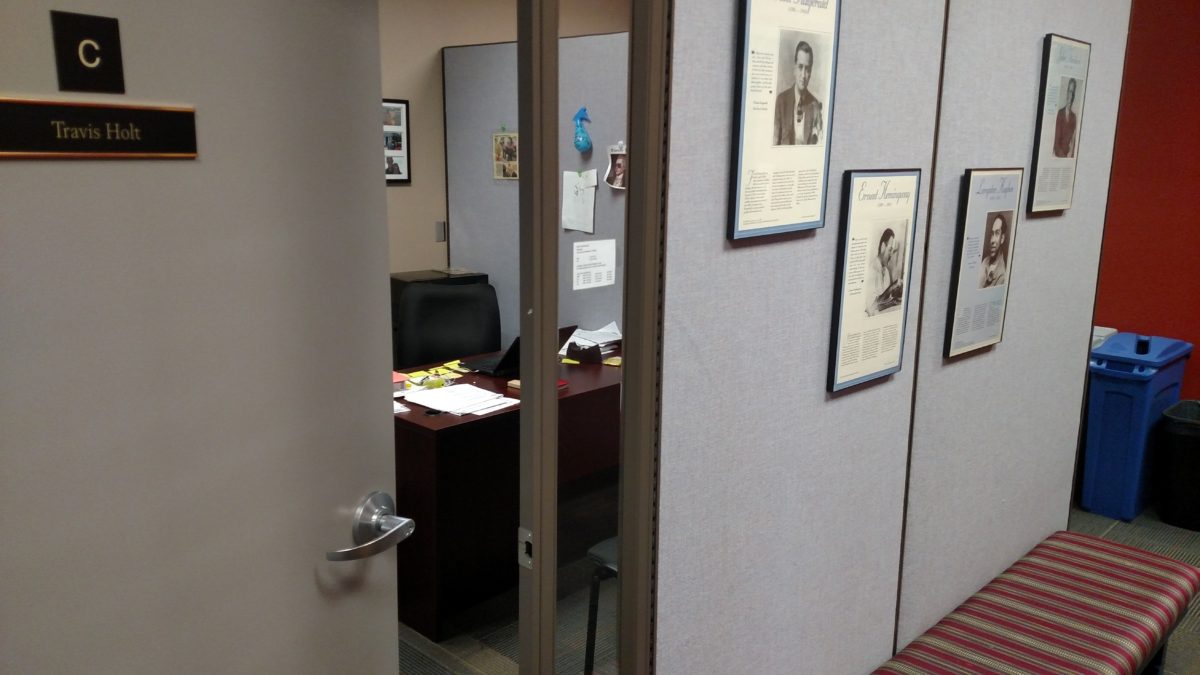
Photo Credit: Pixabay
Basic Writing has worked to establish not only its legitimacy in the academy since the 1970s (M. Shaughnessy, 1977), it has had to fight for its place in the four year university setting as well. Threatened by administrative decisions emanating from funding concerns as well as the desire to prevent “the erosion of standards,” Basic Writing has been pushed to technical and community college campuses (Otte & Mlynarczyk, 2010, p.9), a process of “mainstreaming” where the removal of Basic Writing supposedly removes the hierarchies created by its inclusion. While this fight is nothing new, it does prompt questions. In an interview with D. Richards, he discussed the call in Rhetoric and Composition, led by Kathleen Blake Yancey early in her editorship with CCC, for empirical-based research with intended replicable findings (personal communication, September 21, 2016). Likewise, what empirical research can we do to establish the purpose, need, and success of Basic Writing, not just in our own views, but those of the administrators and politicians who have sought to eliminate remedial subjects? Much of this question originated for Composition and Rhetoric at its beginning, fighting for more recognition than just a FYC in the early 1900s. But for Basic Writing, it is less about where it exists, but if it should. In order to convince the “decision-makers” of the need for such courses, scholars must use the language of administration, which is that of empirical evidence showing the positive effects of keeping remedial programs.
However, DeGenaro & White (2000) noted that before any designs of empirical research begin, Basic Writing scholars must establish a methodological consensus, a statement later echoed by Adler-Kassner & Harrington (2006) when they called for a “time to move beyond academic discussion. We need to take our perspectives and our programs public: it’s time to take data in hand, with rhetorical fierceness” (p.44) because without it, “those strategies are hollow—we might even say ‘empty rhetoric’ unless they are supported by data” (p.43). Much of the work completed before has been theoretical, a “professional dialectic” (DeGenaro & White, 2000) that provides a wealth of ideas but little hard evidence.
One area that Basic Writing has looked to for possible longitudinal studies to justify Basic Writing’s inclusion is transfer theory. If researchers could provide data showing the skills and knowledge in Basic Writing allows for horizontal and/or vertical transfer, it would justify the inclusion of the discipline in post-secondary education. Yet, much of the recent studies in transfer reveal just how difficult it is due to the varying requirements that need to be in place in order for transfer to be successful and thus measureable. Bergmann and Zepernick (2007) commented that students did not view writing in the FYC as the same as writing in other academic disciplines. While students might display adaptive practices where they recognize the type of writing asked for in a particular discipline, they see this as case by case and not interconnected where skills in one will contribute to success in another. Additionally, Wardle (2009) documented how students encountered less writing assignments that required more involved research which their FYC prepared them for. So the ability to adapt to different contexts within each discipline does not seem to be the issue, but it is the student’s overall awareness of transfer, where skills connect across disciplines, that should be recognized.
As technological advancements continue to shape and reshape the field of education (Luke, 2004), altering how students encounter and interact with the curricula (Whitney, 2011), the need for further studies of transfer increase, especially since students build literacies in so many areas outside of the education setting. Moore (2012) drew attention to this issue and questions, “How do complementary, parallel, and intersecting activity systems impact students’ shifts among concurrent activity systems, as well as from school to professional activity systems?” Moore’s (2012) question eluded to “boundary-crossing,” as Donahue (2012) described as “[b]ringing ideas, concepts, or instruments from one domain into another, apparently unrelated one. . .” (p. 165). If my students actively participate in social media, how does their involvement there help them understand how to recognize audience in a composition classroom? How do students navigate rhetorical situations in a non-academic setting, and how can educators use that knowledge in a formal academic setting?

Photo Credit: LoboStudioHamburg
One big question in Basic Writing (should it exist and how to prove it is necessary?) has led to many investigations into transfer theory, which in turn has led to its own questions regarding what is necessary for it to take place if it happens at all. But as more scholars study transfer theory in the classroom and understand how students successfully or unsuccessfully navigate multiple contexts that require similar, if not identical, skills and literacies, it will begin to provide the research needed to justify Basic Writing in higher education. More questions will certainly arise from these studies, but any living, thriving field cannot be stagnant or settled.
References
Adler-Kassner, L., & Harrington, S. (2006). In the Here and Now: Public Policy and Basic Writing. Journal Of Basic Writing (CUNY), 25(2), 27-48. Retrieved from http://www.asu.edu/clas/english/composition/cbw/jbw.html
Bergmann, L.S. & J. Zepernick. (2007). Disciplinarity and Transfer: Students’ Perceptions of Learning to Write. Writing Program Administration 31(1-2), 124-49. Retrieved from http://p2048-ezproxy.liberty.edu.ezproxy.liberty.edu/login?url=http://go.galegroup.com.ezproxy.liberty.edu/ps/i.do?p=AONE&sw=w&u=vic_liberty&v=2.1&it=r&id=GALE%7CA242454181&sid=summon&asid=18038729db155c3ea2a7a3f615a65dc9
DeGenaro, W., & White, E. (2000). Going Around in Circles: Methodological Issues in Basic Writing Research. Journal of Basic Writing, 19(1), 22-35. Retrieved from http://www.jstor.org/stable/43739261
Donahue, C. (2012). Transfer, Portability, Generalization: (How) Does Composition Expertise “Carry”?. In K. Ritter & P. Kei Matsuda (Eds.), Exploring Composition Studies (pp. 145-166). Boulder, CO: UP of Colorado.
Luke, A. (2004). At Last: The Trouble with English. Research in the Teaching of English, 39(1), 85-95.
Moore, J. (2012). Mapping the Questions: The State of Writing-Related Transfer Research. Composition Forum, 26 Retrieved from http://www.eric.ed.gov/contentdelivery/servlet/ERICServlet?accno=EJ985810
Otte, G., & Mlynarczyk, R. W. (2010). The Future of Basic Writing. Journal Of Basic Writing (CUNY), 29(1), 5-32. Retrieved from http://orgs.tamu-commerce.edu/cbw/cbw/JBW.html
Shaughnessy, M. (1977). Errors and Expectations: A Guide for the Teacher of Basic Writing. New York: Oxford UP.
Wardle, E. (2009). “Mutt Genres” and the Goal of FYC: Can We Help Students Write the Genres of the University? College Composition and Communication, 60(4), 765-789. Retrieved from http://www.jstor.org/stable/40593429
Whitney, A. (2011). In Search of the Authentic English Classroom: Facing the Schoolishness of School. English Education, 44(1), 51-62.

Great read! I’m just starting to look into transfer theory as I was introduced to this conversation through Yancey this summer. I’m particularly interested in the aspect of this conversation that would include alternate situations, such as the Dual Enrollment and AP classrooms, where students are being granted FYC and basic writing credits in a varied context. What are the implications for learning transfer within these contexts? We should talk sometime.
That’s a good question, Sarah. And I can tell you from my experience with those students in the university setting, their abilities definitely vary. Some were ready, and others really were not (in a big way). I can see many variables at play in this situation, so I’m intrigued as to what could be found there.
Thank you for the comments!
Hi, Travis – I’m not sure if it’s happening across other Southern schools, but in Texas, the trend is to do away with the “traditional” stand-alone Basic Writing or remedial Reading courses and either do one of two things: 1) have an integrated Reading and Writing course that incorporates and reinforces both skills, or 2) have a 1- or 2-hour “support” course that runs concurrently with a student’s enrollment in “regular” first semester freshman composition or in reading-intensive courses (like History). My former community college has abolished almost all of their traditional remedial courses (except for remedial math) and no longer offers students the options of focused skill development in a “not-for-credit” environment. No one has any idea if it’s actually going to be effective or not; it’s all driven by state funding mechanisms. This large-scale “experiment” in Texas might provide some insight into the “should it exist” question.
Yes, this is common in many areas but not all, Joanna. I’m fortunate to be at a private liberal arts university that actually GIVES credit for the remedial class. I think if we move away from that model, it becomes a downward spiral.
And I’ve heard of each of the models you mentioned (and then some). I think the desire to help the students is consistent, but like you said, political entities force universities to adapt and somehow reach these students while fitting the desired outcomes of those outside bodies (funding the system). This turns us towards the conversation about accessibility and the hierarchies created by such a structure.
Thank you for the comments.
Hi Travis,
Your post made me think about my time working at a community college, and the answer for transfer with “remedial” or “basic writing” students was co-requisites. A student was required to take a History or Intro to Psych class, for example, alongside their basic writing course, and that was supposedly helping them transfer knowledge. It was unclear if this actually worked, but it was on a fail one, fail the other system, and I wonder if that was more of a motivation than anything else. I just began reading this book on transfer, https://www.amazon.com/Rhetoric-Reflection-Kathleen-Yancey/dp/1607325152
by Yancey, and it contains some very interesting ideas about the role of reflection in transfer. When I taught basic writing, I didn’t use reflective writing, and I see now what a missed opportunity that was. I’m beginning to see that a student making purposeful rhetorical choices is the mark of success, either in Basic Writing or any other writing course. This is a great post =)
Monica, thank you for the response. I hadn’t heard of a model like that before, and I agree, it sounds more like a motivational method to get students to complete the work and move on; however, it is interesting that those courses were paired with Basic Writing, especially Pysch. I think it’s worth investigating for sure.
Yes, I’ve run across Yancey’s work on more than one occasion, but not this one specifically. I’ve already pulled it up and will try to get a copy. Thank you!
Your questions about transfer and administrative decisions/funding are VERY relevant I would say. It seems that basic writing and composition would be the LAST to get cut back rather than among the first as it is invaluable to students even in technical colleges, and especially with new media forums open for basic writing. I think you’ve hit on many really good revelations. Now if only there was a clear path to change.
Exactly, D’An, but what people disagree on is the philosophies of those courses. For technical colleges, they want students to function well in their workplace; however, if a teacher wants students to reflect on their rhetorical situations and the moves they make, that may not fit what administration wants students to do. Thus, the college might move writing into a more specific formalist course where it is about “how to write a memo; how to write an email; etc. . .” and then eliminate the Basic Writing model.
It is definitely worth seeking out an agreeable path for all parties, but removing the course altogether should not be that path.